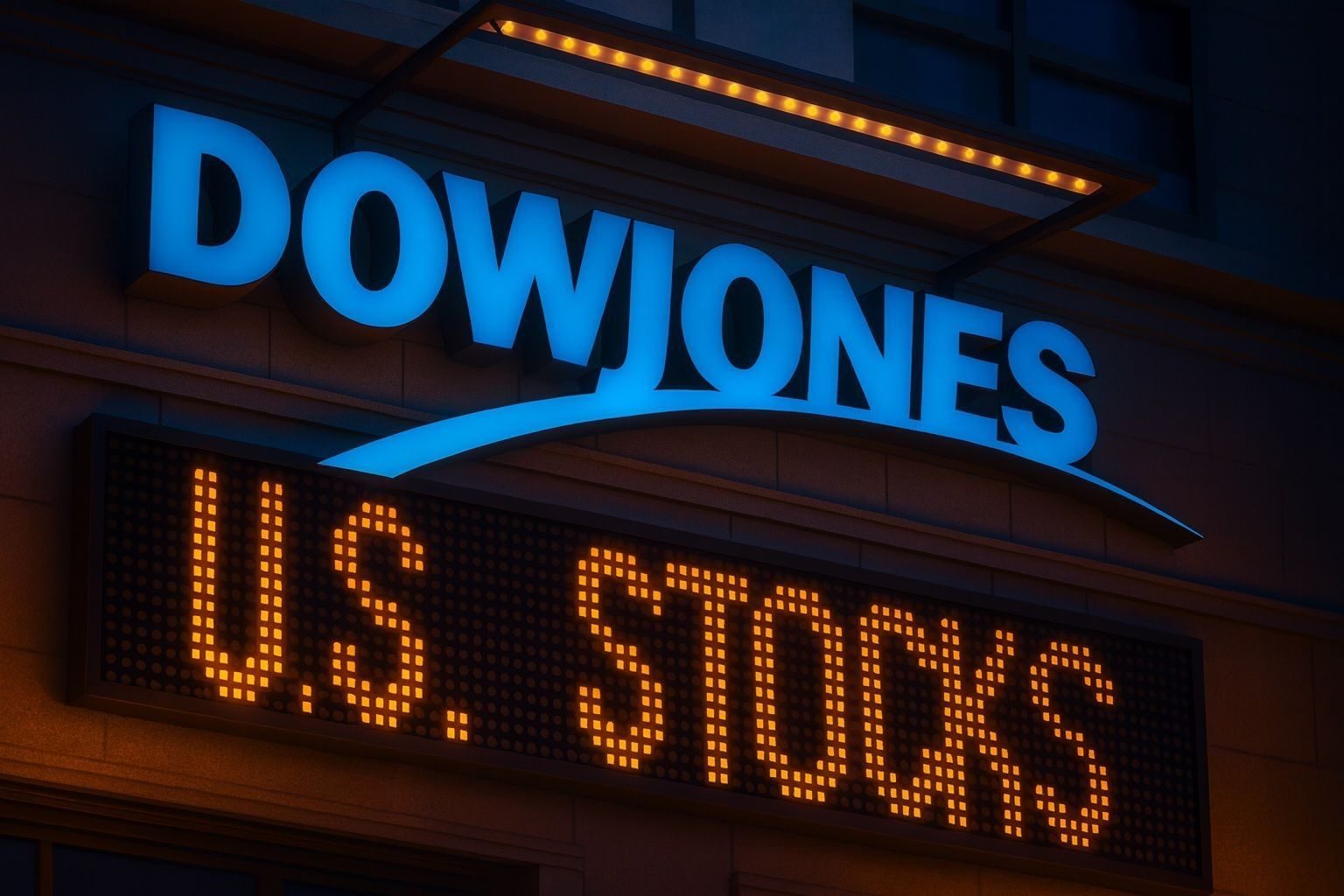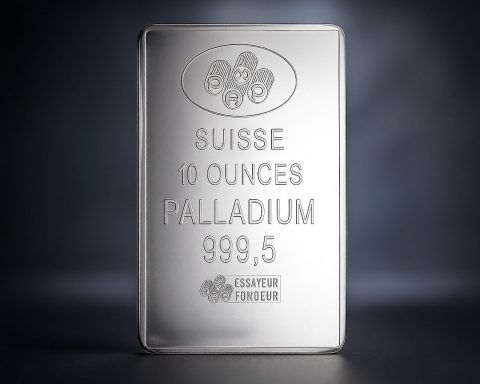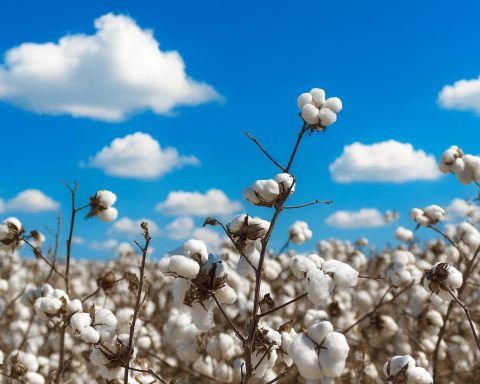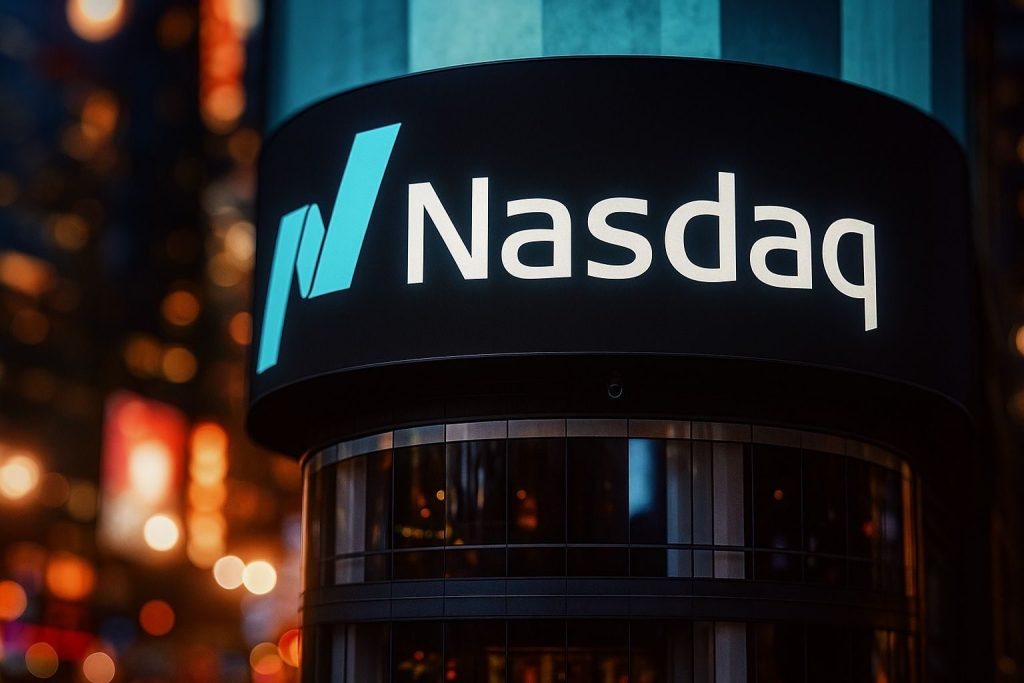On Monday, 24 November 2025, the Dow Jones Industrial Average (Dow 30) climbed 202.86 points, or 0.44%, to 46,448.27, kicking off the holiday‑shortened week with a strong risk‑on tone. The rally was powered by healthcare and industrial heavyweights such as Merck, Caterpillar, IBM and Nvidia, while tech‑driven enthusiasm sent the Nasdaq up 2.69% and the S&P 500 up 1.55%. [1]
Investors snapped up blue‑chip stocks as markets priced in a roughly 80–85% chance that the Federal Reserve will cut rates again in December, even as policymakers navigate a rare economic “data blackout” after the government scrapped October inflation and jobs reports. [2]
Market snapshot: Dow 30 rides tech and rate‑cut optimism
- Dow 30: 46,448.27, +202.86 points (+0.44%) [3]
- S&P 500: 6,705.12, +1.55%
- Nasdaq Composite: 22,872.01, +2.69% – its biggest one‑day percentage gain since May. [4]
Pre‑market trading already hinted at a strong session: Dow futures were modestly higher, and one Dow‑focused blog noted the index was indicated about 160 points up before the bell, building on Friday’s 1.1% jump. [5]
After the open, the Dow quickly pushed more than 150–180 points higher, with Merck, Amazon and Caterpillarrepeatedly highlighted in intraday reports as key drivers of the index’s advance. [6]
By the closing bell:
- 15 of the 30 Dow components finished higher,
- Leaders came from healthcare, industrials, financials and big tech,
- Defensive consumer names such as Procter & Gamble, Verizon and Disney weighed on the index. [7]
Macro backdrop: Fed rate‑cut hopes in a data vacuum
Monday’s rally was rooted less in fresh earnings and more in central‑bank expectations and bond yields:
- 10‑year U.S. Treasury yields slipped to around 4.03–4.04%, extending last week’s bond rally and easing pressure on equity valuations. [8]
- Comments from New York Fed President John Williams and Fed Governor Christopher Waller reinforced the idea that another quarter‑point rate cut in December is likely, provided the labor market remains soft and inflation doesn’t re‑accelerate. [9]
- Futures markets now imply roughly an 80–85% probability of a December cut, according to CME FedWatch‑based reporting and market wrap articles. [10]
At the same time, traders are grappling with an unprecedented gap in official economic data:
- The Bureau of Labor Statistics canceled the October 2025 CPI release because the extended federal shutdown prevented price surveys from being conducted. [11]
- The November CPI report has been pushed to 18 December, after the Fed’s December policy meeting, meaning policymakers must decide on rates without two months of standard inflation data. [12]
- A separate decision to scrap the full October jobs report has intensified criticism from economists and lawmakers, who warn the “data blackout” makes the Fed’s job harder and adds volatility to markets. [13]
For equity investors, that combination—lower yields + high odds of a rate cut + thin data—is currently bullish for growth and AI‑exposed names, and that mood spilled directly into the Dow 30.
Top Dow 30 gainers: Healthcare and industrial heavyweights carry the index
1. Merck (MRK): Best‑performing Dow stock
Merck was the standout name in the Dow 30 on Monday:
- The stock closed at $100.40, up 2.70% on the day, topping the Dow’s performance leaderboard. [14]
- Intraday reports from MarketWatch and Nasdaq flagged Merck as the single strongest Dow component in early and midday trading, with gains around 3–4%. [15]
- A news brief noted that Wells Fargo upgraded Merck, helping trigger an afternoon surge of about 4% and attracting fresh institutional interest. [16]
Because the Dow is price‑weighted, Merck’s multi‑dollar move contributed a disproportionate number of index points. MarketWatch estimated that Merck, together with Caterpillar in one update and with IBM in another, accounted for roughly 70–100 points of the Dow’s intraday gain at different points during the session. [17]
2. Caterpillar (CAT): Cyclical bellwether near record highs
Industrial giant Caterpillar added more fuel to the Dow’s rally:
- CAT finished at $559.60, up 1.67%, after trading as high as $565.74 intraday. [18]
- Market coverage highlighted Caterpillar as one of the primary drivers of the Dow’s 180‑point midday rise, alongside Merck. [19]
- A separate analysis noted that Caterpillar shares are up more than 50% year to date, quietly outpacing even some high‑profile AI names like Nvidia in 2025 thanks to strong demand in construction, mining and energy equipment. [20]
With investors betting on easier financial conditions and ongoing infrastructure spending, Caterpillar continues to act as a barometer for cyclical risk appetite inside the Dow.
3. IBM (IBM): Old‑school tech rides the AI wave
IBM also delivered a strong session:
- Shares closed at $304.12, up 2.25%, making IBM one of the day’s top Dow performers. [21]
- MarketWatch live updates repeatedly cited IBM alongside Merck as a key contributor to the Dow’s intraday gains, at one point adding almost 80 points to the index between them. [22]
- Longer‑horizon pieces from early November point out that IBM stock is up around 40–45% in 2025, boosted by enterprise AI services and renewed focus on hybrid cloud and quantum computing. [23]
IBM’s performance underscores how “legacy” tech names in the Dow are benefitting from the same AI enthusiasm that’s propelling Nasdaq stalwarts.
4. Amazon (AMZN) and Nvidia (NVDA): AI‑linked momentum supports the Dow
While mega‑cap tech leadership is more visible in the Nasdaq, Amazon and Nvidia are now key parts of the Dow 30 story:
- Amazon (AMZN) ended the day at $226.28, up 2.53%. Early‑session MarketWatch updates cited Amazon together with Merck as a major reason the Dow was up nearly 150 points shortly after the opening bell. [24]
- Nvidia (NVDA) gained 2.05% to $182.55, clawing back a piece of last week’s roughly 6% decline that followed its blockbuster Q3 results. [25]
Across Wall Street, AI optimism remained the central narrative:
- Alphabet rallied around 6%, buoyed by enthusiasm for its new Gemini 3 AI model. [26]
- Tesla surged roughly 6–7% after Elon Musk touted the company’s AI chips and humanoid robot roadmap, giving an extra boost to overall sentiment even though Tesla is not in the Dow. [27]
That broader tech risk‑on mood helped support the Dow’s more traditional members and made it easier for cyclical and healthcare stocks to extend Friday’s rebound.
5. Johnson & Johnson (JNJ), Goldman Sachs (GS) and Apple (AAPL): Quiet but important tailwinds
Several other Dow constituents made less flashy but still meaningful contributions:
- Johnson & Johnson (JNJ) rose 1.05% to $206.05, marking a record all‑time closing high and sitting just below its 52‑week high of $206.94, according to historical data and company investor materials. [28]
- Goldman Sachs (GS) advanced 2.15% to $790.71, supported by the drop in Treasury yields and optimism around continued capital‑markets activity as volatility returns. [29]
- Apple (AAPL) climbed 1.63% to $275.92, participating in the broader large‑cap tech rally even as AI‑centric peers took center stage. [30]
These moves may not have grabbed headlines individually, but in a price‑weighted index like the Dow, each multi‑dollar gain from a high‑priced constituent helps push the benchmark higher.
Dow 30 laggards: Staples, telecom and consumer names under pressure
Not every Dow component joined the party. The weakest names skewed toward defensive and consumer‑oriented sectors.
Procter & Gamble (PG): Heavy volume and sector underperformance
Procter & Gamble was the biggest decliner in the Dow:
- PG dropped 2.61%, with nearly $2 billion worth of shares traded, putting it among the most actively traded large‑caps of the session. [31]
- Recent analysis notes that P&G shares have fallen about 7–8% over the last three months and sit roughly 18.5% below their November 2024 high, lagging even a soft consumer‑staples sector. [32]
With investors rotating back into growth and AI winners, high‑quality but slower‑growing staples like P&G are temporarily out of favor, and Monday’s price action reflected that.
Verizon (VZ): Structural worries overshadow the bounce
Telecom giant Verizon slid 2.47% to $40.21, extending a difficult stretch for the stock. [33]
Recent coverage has highlighted:
- A multi‑year slump in Verizon’s market share,
- A leadership shake‑up in October, with the board replacing the CEO amid concerns that heavy 5G spending has not translated into clear competitive advantage. [34]
Against that backdrop, Monday’s risk‑on move favored more dynamic growth stories, leaving Verizon behind despite a friendlier rate environment.
Disney (DIS), Home Depot (HD), McDonald’s (MCD) and Nike (NKE)
Several consumer and retail‑sensitive Dow names also struggled:
- Disney (DIS) fell about 2.2%, trading around $101.9 on volume more than 50% above its average, as investors continued to debate the company’s streaming strategy and media outlook. [35]
- Home Depot (HD) declined 1.96% to $336.58, still digesting a recent guidance cut and weaker‑than‑expected quarterly results tied to soft home‑improvement demand. [36]
- McDonald’s (MCD) slipped 1.44%, with prior weeks’ coverage focusing on pressure from low‑income consumers and tariff‑related uncertainty that has weighed on global same‑store sales. [37]
- Nike (NKE) dropped 1.39% to $61.93, underperforming competitors and sitting nearly 25% below its 52‑week high, according to MarketWatch and historical price data. [38]
In aggregate, these declines partly offset gains from the day’s star performers but weren’t enough to derail the Dow’s 200‑point advance.
Structural signals inside the Dow 30
Beyond individual movers, Monday’s tape told a few deeper stories about the state of the Dow 30:
- Breadth was positive but not overwhelming
- Exactly half of the index (15 stocks) finished higher, highlighting that a relatively small group of large price‑weighted winners (Merck, IBM, Caterpillar, Amazon, Nvidia, GS, J&J) did most of the heavy lifting. [39]
- Healthcare and industrials are emerging as 2025 leaders
- Defensive staples and telecom remain the weak link
- Names like P&G and Verizon highlight investors’ shift away from bond‑like equities whenever yields pull back and growth stories take the stage. [42]
- Data uncertainty may amplify future volatility
- With the Fed forced to set policy without October inflation and jobs data, each incoming private indicator and Fed speech could trigger outsized moves in rate‑sensitive Dow components—especially banks, consumer cyclicals and rate‑sensitive defensives. [43]
What to watch next for Dow 30 investors
Looking beyond 24 November, several catalysts could shape the next move in the Dow 30:
- Thanksgiving week liquidity
- U.S. markets are closed on Thursday for Thanksgiving and close early on Friday, which typically reduces trading volume and can exaggerate intraday swings in individual Dow stocks. [44]
- Delayed economic data
- The combined October/November CPI release on 18 December and the catch‑up jobs report will now arrive after the Fed’s December meeting, meaning the central bank’s decision will rely more heavily on survey data, private indicators and market pricing. [45]
- Sector rotations inside the Dow
- If rate‑cut hopes remain intact and AI enthusiasm persists, tech‑adjacent and cyclical Dow components(IBM, Nvidia, Caterpillar, Goldman, Amazon) may keep leadership. [46]
- Conversely, any renewed spike in yields or disappointment around holiday sales could shift momentum back toward defensives like J&J, Coca‑Cola and utilities‑style names—while also testing the recent drawdowns in P&G, Verizon and Disney. [47]
Bottom line
On 24 November 2025, the Dow 30 delivered a solid, 200‑point gain, driven by Merck, Caterpillar, IBM, Nvidia, Amazon and other growth‑tilted blue chips, as Fed rate‑cut optimism and easing bond yields outweighed weakness in consumer‑staples and telecom names. [48]
The session showcased how sensitive the index now is to AI sentiment, Fed communication and the unusual economic‑data gap created by the prolonged government shutdown. For now, the market is giving the benefit of the doubt to a soft‑landing scenario—but with thin holiday liquidity and key data pushed into December, volatility inside the Dow 30 is likely far from over.
Note: This article is for informational purposes only and does not constitute investment advice. Always do your own research or consult a licensed financial adviser before making investment decisions.
References
1. www.reuters.com, 2. www.investopedia.com, 3. www.reuters.com, 4. www.reuters.com, 5. www.investopedia.com, 6. www.marketwatch.com, 7. www.dow-jones-djia.com, 8. www.reuters.com, 9. www.investopedia.com, 10. www.investopedia.com, 11. www.reuters.com, 12. www.bls.gov, 13. apnews.com, 14. www.dow-jones-djia.com, 15. www.marketwatch.com, 16. finance.yahoo.com, 17. www.marketwatch.com, 18. www.dow-jones-djia.com, 19. www.marketwatch.com, 20. www.fool.com, 21. www.dow-jones-djia.com, 22. www.marketwatch.com, 23. www.fool.com, 24. www.dow-jones-djia.com, 25. www.dow-jones-djia.com, 26. www.investopedia.com, 27. www.investors.com, 28. www.dow-jones-djia.com, 29. www.dow-jones-djia.com, 30. www.dow-jones-djia.com, 31. www.dow-jones-djia.com, 32. www.barchart.com, 33. www.dow-jones-djia.com, 34. www.wsj.com, 35. www.dow-jones-djia.com, 36. www.dow-jones-djia.com, 37. www.dow-jones-djia.com, 38. www.marketwatch.com, 39. www.dow-jones-djia.com, 40. www.marketwatch.com, 41. www.fool.com, 42. www.ainvest.com, 43. www.reuters.com, 44. www.investopedia.com, 45. www.reuters.com, 46. www.investopedia.com, 47. www.macrotrends.net, 48. www.reuters.com









